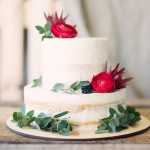Silicone molds are essential tools for cake decorating, allowing bakers to create intricate designs with ease and precision. In this article, we will delve into the world of DIY silicone molds specifically tailored for cake decoration. From basic shapes to elaborate patterns, understanding how to make silicone molds for cake decorating opens up a realm of creative possibilities in the kitchen.
Whether you are a professional baker or an avid home cook, knowing how to craft your own silicone molds can elevate your cake decorating skills to new heights. By using easily accessible materials, you can customize molds to suit your unique design preferences and bring your cake creations to life. With the right guidance and techniques, making silicone molds at home can be a rewarding and enjoyable experience.
In the following sections, we will walk you through the materials needed and provide a step-by-step guide on creating silicone molds specifically tailored for cake decorating. Additionally, we will explore different types of silicone and offer valuable tips on choosing the best one for your purposes. Stay tuned as we uncover the secrets behind successful molding techniques and innovative ways to use silicone molds in cake decoration.
Materials Needed
When it comes to cake decorating, silicone molds are a great tool to have in your arsenal. They allow you to create intricate designs and decorations with ease. Making your own silicone molds for cake decorating can be a fun and rewarding project. In this section, we will outline all the materials you will need to get started on creating your own silicone molds.
To make silicone molds for cake decorating, gather the following supplies:
- Silicone mold making rubber: This is the primary material you will need to create your molds. Make sure to choose a food-grade silicone that is safe for use with edible creations.
- Mixing container: You will need a disposable or reusable container for mixing the silicone rubber.
- Stirring sticks: Wooden popsicle sticks or plastic stirrers work well for mixing the silicone rubber thoroughly.
- Object to mold: You will need an object or design that you want to replicate in your cake decorating. This could be anything from small figurines to intricate shapes.
- Release agent: To ensure easy removal of your mold from the original object, using a release agent such as cornstarch or petroleum jelly is recommended.
Once you have gathered all these materials, you are ready to start on creating your own silicone molds for cake decorating. Follow our step-by-step guide in the next section for detailed instructions on how to proceed with this creative process.
Step-by-Step Guide
Making your own silicone molds for cake decorating can be a fun and rewarding DIY project. To get started, you will need the following materials: silicone mold putty, a mixing bowl, a disposable stirring stick, the object you want to make a mold of (such as a small figurine or shape), and some cornstarch for dusting.
First, begin by kneading the silicone mold putty according to the manufacturer’s instructions. Make sure to work quickly as the putty will set within a few minutes. Once the putty is well mixed, flatten it out into a pancake shape on a clean work surface.
Next, press the object you want to mold firmly into the putty, making sure it is centered and level. Use your fingers to smooth out any wrinkles or creases in the putty around the object. Allow the putty to fully set according to the manufacturer’s recommended time.
Once the silicone mold has fully set and cured, carefully remove the object from the mold. Dusting some cornstarch onto the surface of the mold can help prevent sticking when removing delicate objects. Your homemade silicone mold is now ready to use for cake decorating.
Choosing the Right Silicone
Silicone molds are essential tools for cake decorating, allowing bakers to create intricate designs and decorations with ease. When it comes to choosing the right silicone for making molds, there are a few key factors to consider. The first is the type of silicone you will use – either pourable liquid silicone or kneadable silicone putty. Pourable liquid silicone is ideal for creating detailed molds with complex shapes, while kneadable silicone putty is great for quick and simple molds.
In addition to the type of silicone, it’s crucial to consider the hardness or softness of the material. A softer silicone will be more flexible but may not hold its shape as well, while a harder silicone will provide more stability but may be challenging to demold delicate designs. For cake decorating purposes, a medium-soft silicone is typically recommended as it strikes a balance between flexibility and structure.
When selecting silicone for making molds for cake decorating, opt for food-grade materials that are safe for use with edible treats. Look for products specifically labeled as food-safe to ensure that your creations are not only beautiful but also entirely safe for consumption. By carefully considering these factors and choosing the right type of silicone, you can make high-quality molds that will elevate your cake decorating projects to the next level.
| Type of Silicone | Recommendation |
|---|---|
| Pourable Liquid Silicone | Ideal for intricate designs |
| Kneadable Silicone Putty | Great for quick and simple molds |
Tips and Tricks
Proper Mixing Ratios
When making silicone molds for cake decorating, the correct mixing ratio of the silicone base and the catalyst is crucial to ensure a successful mold. Be sure to carefully follow the manufacturer’s instructions for the specific brand of silicone you are using. Incorrect ratios can result in the mold not setting properly or having weak spots that can tear easily.
Use a Mold Release Agent
To help with demolding your cake decorations, consider using a mold release agent before pouring in the silicone mixture. This will prevent the cured silicone from sticking to your original cake decorating piece, making it easier to remove without damaging either the mold or the finished decoration.
Eliminate Air Bubbles
Air bubbles can create imperfections in your silicone molds and affect the final look of your cake decorations. To avoid this issue, pour your silicone mixture slowly and steadily into the mold, allowing any bubbles to rise to the surface. You can also gently tap or shake the mold to release any trapped air bubbles before the silicone sets.
By following these tips and tricks on how to make silicone molds for cake decorating, you can ensure that your creations turn out beautifully every time. Experiment with different shapes, sizes, and designs to bring your cake decorating ideas to life with custom-made molds tailored to fit your vision perfectly.
Using the Molds
Proper Cleaning of Silicone Molds
When using silicone molds for cake decorating, it’s essential to start with clean molds to ensure the best results. Before using the mold for the first time, wash it thoroughly with warm, soapy water and a soft sponge or brush. Make sure to remove any dust or particles that may have collected during storage.
After each use, wash the silicone mold with warm water and mild detergent, then rinse it thoroughly. Avoid using abrasive sponges or cleaning agents that could damage the mold.
Removing Air Bubbles
Air bubbles can sometimes get trapped in the silicone mold while pouring in the cake decorating material. To prevent this from happening, gently tap the mold on a flat surface after filling it to release any air bubbles trapped inside. You can also use a toothpick or skewer to carefully poke and release any stubborn air bubbles. This step is crucial for ensuring smooth and flawless decorations when using silicone molds for cake decorating.
Freezing or Refrigerating Decorations
If you’re working with intricate designs or delicate decorations made from silicone molds, consider freezing or refrigerating them before placing them on your cake. This will help firm up the decoration and make it easier to handle without losing its shape.
Simply place the filled silicone mold in the freezer or refrigerator for a few minutes until the material has set firmly. Once hardened, carefully remove the decoration from the mold and place it on your cake for a stunning finish.
Decorating Techniques
Silicone molds offer a versatile way to decorate cakes creatively, adding intricate details that can elevate the overall look of your baked creations. Once you have successfully made your silicone molds (as per the outlined steps in the previous section), it’s time to explore various decorating techniques to use them effectively for cake decoration. Here are some creative ways to unleash the potential of your newly crafted silicone molds:
One exciting technique is using multiple silicone molds to create a layered effect on your cakes. By combining different shapes and designs, you can build a visually stunning and unique element on your cake. For example, you can layer flower-shaped silicone molds on top of each other to form a dimensional floral arrangement on your cake. This technique adds depth and complexity to your cake design effortlessly.
Another innovative way to use silicone molds is by incorporating them into fondant or gum paste decorations. Pressing fondant or gum paste into the silicone mold creates beautifully detailed embellishments that can be easily attached to your cake. From intricate borders to personalized monograms, the possibilities are endless with this technique. Remember to dust the inside of the mold with cornstarch beforehand to prevent sticking and ensure clean release of the molded piece.
Furthermore, consider painting or airbrushing your silicone mold decorations before placing them on your cake for an added pop of color and dimension. Edible metallic paints, food coloring pens, or even shaded buttercream can be used to enhance the details of the molded pieces. This technique allows you to customize and match the colors of your cake theme seamlessly. Explore different color combinations and techniques to find what works best for your design vision.
By experimenting with these creative techniques, you can truly make a statement with your cake decorating skills using silicone molds. The key is to embrace experimentation and let your creativity flow freely when incorporating these molds into your designs. Whether you’re decorating a simple birthday cake or an elaborate wedding masterpiece, using silicone molds opens up a world of possibilities for adding intricate details and personal touches to your sweet creations.
Remember, practice makes perfect. So don’t be afraid to try out new ideas and techniques when using silicone molds for decorating cakes – who knows what stunning creations you may come up with next?
Maintenance and Storage
Maintaining and properly storing silicone molds is essential to ensure their longevity and effectiveness in cake decorating. By following these care instructions, you can maximize the lifespan of your molds and continue creating beautifully designed cakes for years to come.
To begin with, it is important to clean your silicone molds after each use. Wash them gently with mild soap and warm water, making sure to remove any residue or leftover cake material. Avoid using abrasive cleaners or scrubbing too harshly, as this can damage the mold’s surface. Once cleaned, allow the molds to air dry completely before storing them.
When it comes to storage, silicone molds should be kept in a cool, dry place away from direct sunlight. This will help prevent any warping or discoloration of the silicone over time. Additionally, make sure the molds are stored flat or hung up to maintain their shape. Avoid stacking heavy items on top of the molds, as this can cause deformation and make them less effective for decorating cakes.
Proper care for your silicone molds extends beyond just cleaning and storage – regular inspection is also key. Check your molds before each use for any signs of wear and tear, such as cracks or tears in the silicone. If you notice any damage, it may be time to replace the mold to ensure that your cake designs turn out perfectly every time.
| Maintenance Tips for Silicone Molds | Storage Recommendations |
|---|---|
| Clean after each use with mild soap and water | Store in a cool, dry place away from direct sunlight |
| Avoid abrasive cleaners or harsh scrubbing | Keep molds flat or hanging to maintain shape |
| Inspect for damage before each use | Avoid stacking heavy items on top of molds |
Conclusion
In conclusion, learning how to make silicone molds for cake decorating can elevate your baking experience to a whole new level. By having the ability to create custom molds tailored to your specific design needs, you unleash a world of creativity and personalization in your cake decorations. The step-by-step guide provided in this article, along with the list of materials needed and tips for successful molding, equips you with the necessary knowledge to embark on this DIY adventure.
Choosing the right silicone for your molds is crucial in ensuring that they are durable and safe for food contact. Understanding the different types of silicone available and selecting the one best suited for cake decorating will guarantee that your creations turn out beautifully every time. Additionally, maintaining and storing your silicone molds properly will prolong their lifespan and keep them in optimal condition for future use.
In essence, making your own silicone molds opens up a world of endless possibilities in cake decorating. From intricate designs to personalized touches, these molds allow you to unleash your creativity and bring your cake visions to life. So don’t hesitate – give it a try.
Follow the detailed instructions provided, explore different decorating techniques, and have fun experimenting with unique mold designs. Your cakes will never be the same once you discover the magic of homemade silicone molds for cake decorating.
Frequently Asked Questions
How Do I Make My Own Silicone Molds?
Making your own silicone molds can be a fun and creative process. To start, you will need silicone mold putty, which is usually a two-part mixture that you combine together.
Once mixed, press the putty around the object you want to make a mold of and let it cure according to the manufacturer’s instructions. Once cured, remove the original object and you will have your custom silicone mold ready for use.
How to Make Custom Cake Molds?
Creating custom cake molds allows you to personalize your baked creations in unique ways. To make your own custom cake mold, start by deciding on the shape and size you want for your cake.
Then, use food-safe materials like silicone putty or food-grade plastic to create your mold by forming it around a model of the desired shape. Allow the mold to set properly before using it with cake batter.
What Ingredients Do You Need to Make Silicone Molds?
Making silicone molds requires specific materials so that they are safe for use with food items. To create silicone molds, you will need food-grade silicone putty or liquid silicone rubber, a mixing bowl, mixing stick, and possibly a release agent to prevent sticking.
Additionally, having objects or shapes that you want to replicate with these molds is essential for creating unique designs. Always follow safety guidelines when working with these materials to ensure proper usage and results.

Welcome to our cake decorating blog! My name is Destiny Flores, and I am the proud owner of a cake decorating business named Cake Karma. Our mission is to provide delicious, beautiful cakes for all occasions. We specialize in creating custom cakes that are tailored specifically to each customer’s individual needs and tastes.





